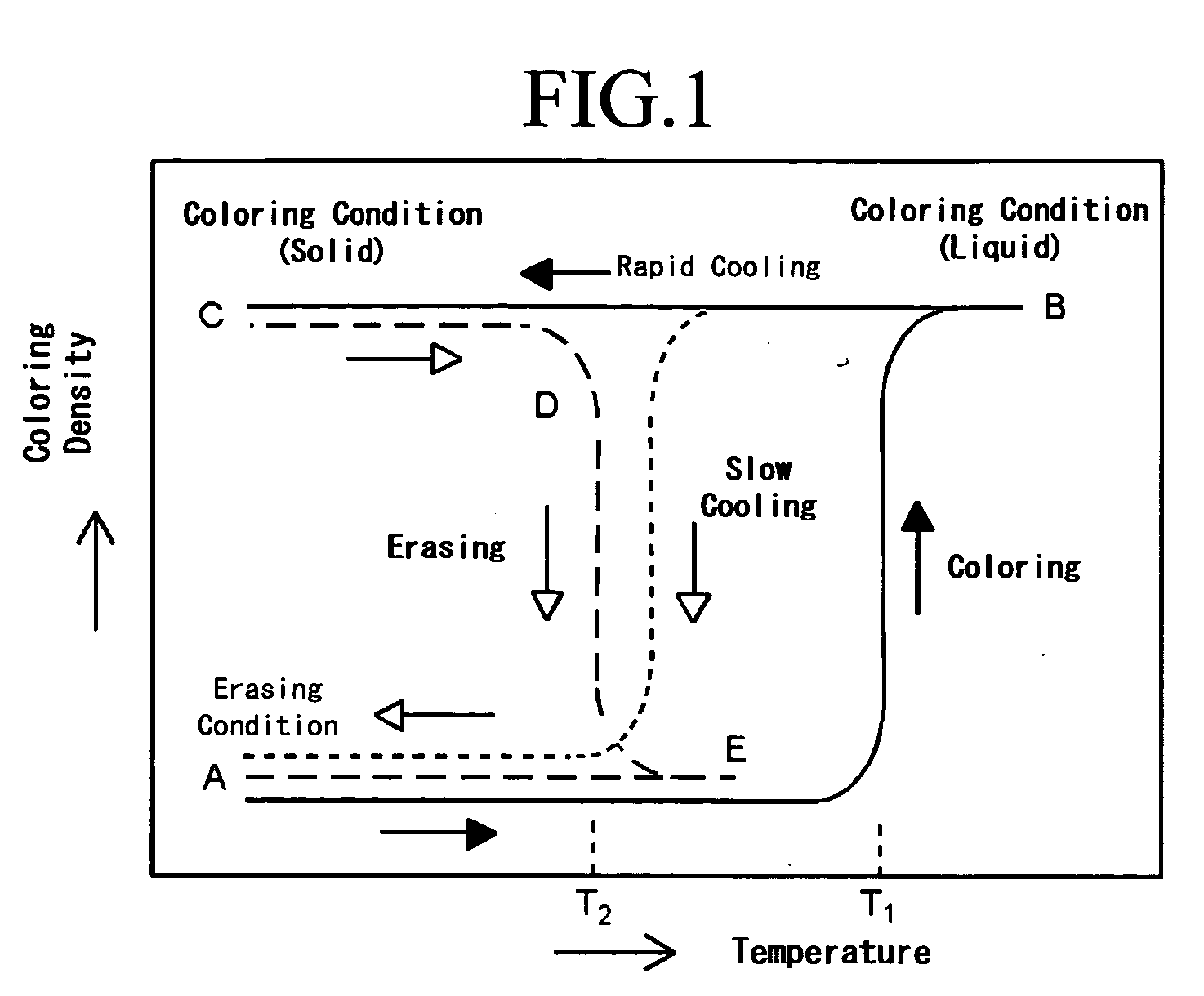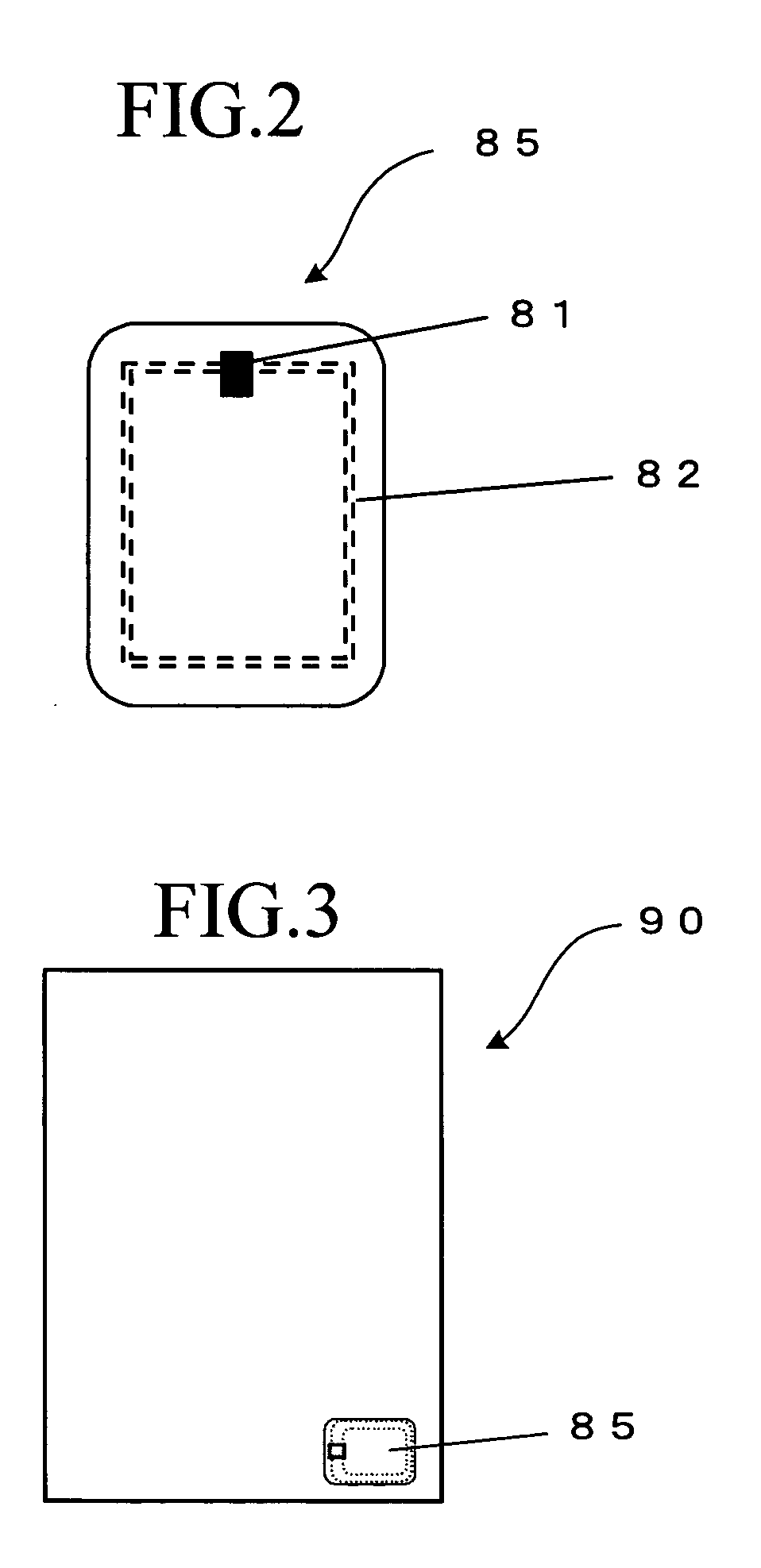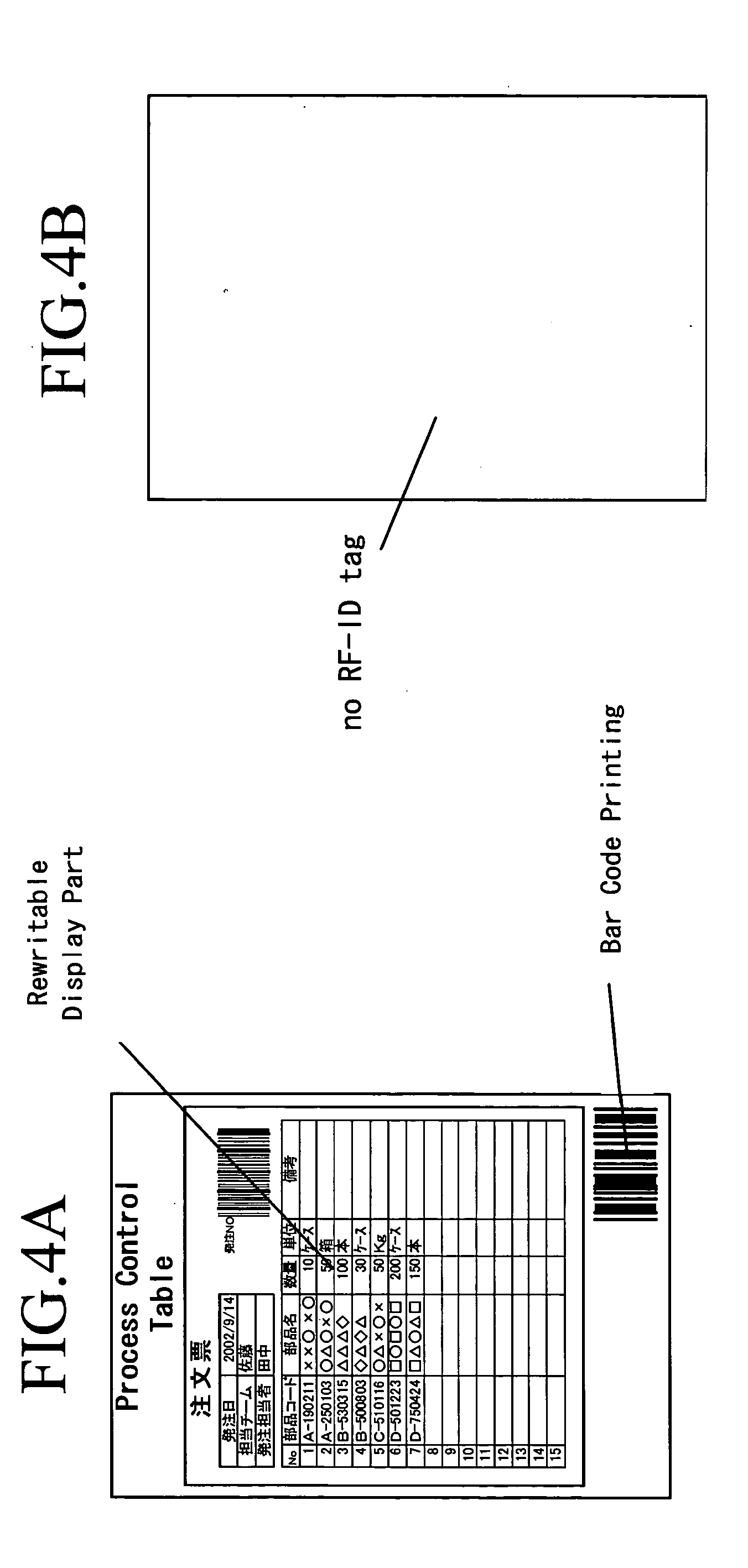Reversible thermosensitive recording medium, label and member, and, image processing apparatus and method
a recording medium and thermosensitive technology, applied in thermography, other printing materials, duplicating/marking methods, etc., can solve the problems of reducing image density, erasing remainder, blowing trace, flaw, etc., and achieving high practicability, high coloring densities, and remarkably increased repeatability.
- Summary
- Abstract
- Description
- Claims
- Application Information
AI Technical Summary
Benefits of technology
Problems solved by technology
Method used
Image
Examples
example 1
<Preparation of Reversible Thermosensitive Recording Medium>
Preparation of Thermosensitive Layer
A composition comprised of 4.5 parts by mass of 3-diethylamino-6-methyl-7-anilinofluoran, 15 parts by mass of a coloring compound expressed by the following formula, and 61 parts by mass of 50 wt % solution of acrylpolyol (FR4754, by Mitsubishi Rayon K.K.) was milled and dispersed to 1.0 μm of particle size by means of a paint shaker. To the resulting dispersion, 20 parts by mass of adduct-type hexamethylenediisocyanate 75% by mass solution in ethyl acetate (Colonate HL, by Nippon Urethane K.K.) was added and stirred well to prepare a coating liquid for thermosensitive layer.
Then the resulting coating liquid for thermosensitive layer was coated on a white PET film 250 μm thick by means of a wire bar, dried at 100° C. for 1 minute, followed by heating at 60° C. for 24 hours, thereby a thermosensitive layer about 11 μm thick was provided.
Preparation of Intermediate Layer
1 par...
example 2
<Preparation of Reversible Thermosensitive Recording Medium>
An reversible thermosensitive recording medium was prepared in the same manner with Example 1, except that the preparation of the protective layer was carried out as follows.
The surface roughness of the resulting recording medium was 1.4 μm.
Preparation of Protective Layer
A composition comprised of 2 parts by mass of silica treated with organic silane compounds (Sailo Horbic 100, number-average particle size 1.4 μm, by Fuji Silysia LTD), 4 parts by mass of tris(acryloxyethyl)isocyanurate (FA-731A, by Hitachi Chemical Co.), 2 parts by mass of dipentaerythritolhexaacrylate (DPHA, Nippon Kayaku Co.), 2 parts by mass of urethane acrylate oligomer (Art Resin UN-3320HA, by Negami Chemical Industrial Co.), 0.4 parts by mass of photopolymerization initiator (Irgacure 907, by Japan Chiba Gaigy Co.), 9 parts by mass of isopropylalcohol, and 9 parts by mass of toluene was stirred well to prepare a coating liquid for protect...
example 3
<Preparation of Reversible Thermosensitive Recording Medium>
A reversible thermosensitive recording medium was prepared in the same manner with Example 1, except that the preparation of the protective layer was carried out as follows.
Preparation of Protective Layer
A composition comprised of 2 parts by mass of silica treated with organic silane compounds (Sailo Horbic 100, number-average particle size 1.4 μm, by Fuji Silysia LTD), 0.5 parts by mass of tris(acryloxyethyl)isocyanurate (FA-731A, by Hitachi Chemical Co.), 3.5 parts by mass of dipentaerythritolhexaacrylate (DPHA, Nippon Kayaku Co.), 4 parts by mass of urethane acrylate oligomer (Art Resin UN-3320HA, by Negami Chemical Industrial Co.), 0.4 parts by mass of photopolymerization initiator (Irgacure 907, by Japan Chiba Gaigy Co.), and 9 parts by mass of isopropylalcohol was stirred well to prepare a coating liquid for protective layer.
The resulting coating liquid for protective layer was coated on the above-noted in...
PUM
| Property | Measurement | Unit |
|---|---|---|
| Percent by mass | aaaaa | aaaaa |
| Particle size | aaaaa | aaaaa |
| Surface roughness | aaaaa | aaaaa |
Abstract
Description
Claims
Application Information
 Login to View More
Login to View More - R&D
- Intellectual Property
- Life Sciences
- Materials
- Tech Scout
- Unparalleled Data Quality
- Higher Quality Content
- 60% Fewer Hallucinations
Browse by: Latest US Patents, China's latest patents, Technical Efficacy Thesaurus, Application Domain, Technology Topic, Popular Technical Reports.
© 2025 PatSnap. All rights reserved.Legal|Privacy policy|Modern Slavery Act Transparency Statement|Sitemap|About US| Contact US: help@patsnap.com



